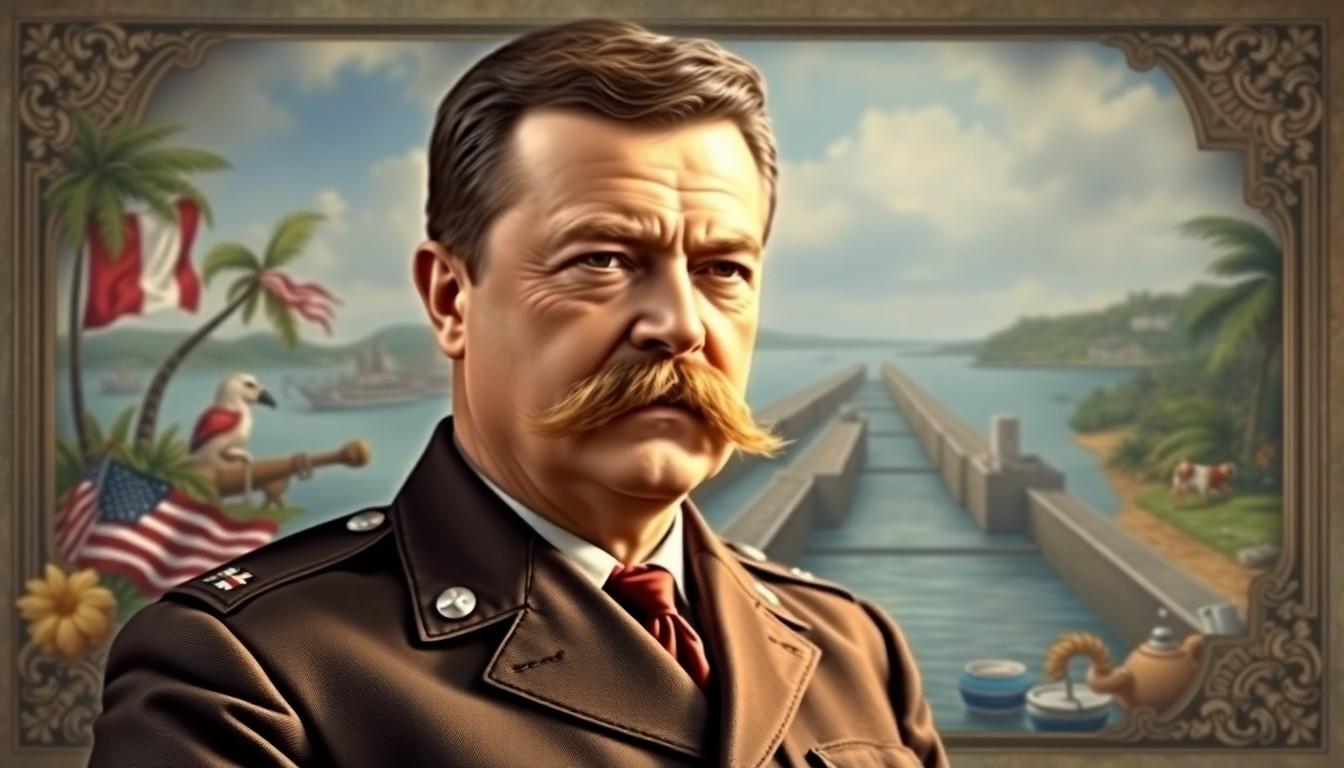The Big Stick Policy isn’t just a historical footnote; it’s a colorful chapter in American politics that’s ripe for exploration. Picture this: a political cartoon that captures the essence of Theodore Roosevelt’s approach to foreign policy, blending humor with a sharp critique of diplomacy. It’s like a political meme before memes were cool, and it still resonates today.
Overview of Big Stick Policy
The Big Stick Policy, articulated by President Theodore Roosevelt, represented an assertive and interventionist foreign policy approach. This strategy emphasized the importance of military power alongside diplomatic negotiation. The phrase “speak softly and carry a big stick” encapsulated Roosevelt’s belief in a strong military as a means to achieve national goals.
Interventions in Latin America illustrated this policy in action, highlighted by the Roosevelt Corollary to the Monroe Doctrine. The corollary justified American intervention in the Dominican Republic and other nations, establishing the United States as a stabilizing force in the region. Additionally, the construction of the Panama Canal showcased Roosevelt’s commitment to American interests and military efficiency.
Political cartoons from the early 20th century serve as vivid representations of the Big Stick Policy. These cartoons often depicted Roosevelt wielding a large stick, symbolizing his readiness to use force if necessary. Such imagery conveyed the duality of diplomacy mixed with the underlying threat of military action, illustrating how Roosevelt navigated complex international relationships.
Scholars frequently analyze the Big Stick Policy’s impact on U.S. foreign relations, noting its long-lasting influence on American interventionism. Some argue this approach laid the groundwork for future military engagements, while others point to its effectiveness in maintaining stability in a volatile region. Collectively, these discussions underscore the policy’s significance in shaping not only American diplomacy but also the global geopolitical landscape.
Historical Context

The Big Stick Policy emerged from a transformative period in American foreign relations. This policy highlighted the assertiveness of U.S. diplomacy under President Theodore Roosevelt.
Theodore Roosevelt’s Influence
Theodore Roosevelt’s leadership played a crucial role in establishing the Big Stick Policy. He believed in combining military strength with diplomatic negotiations. This approach aimed to deter aggression while promoting American interests abroad. Roosevelt’s personality and charisma made him a central figure in shaping U.S. foreign policy. His use of the phrase “speak softly and carry a big stick” succinctly communicated his philosophy. His vision for America’s global role encouraged a proactive stance in international affairs.
Key Events Leading to the Policy
Several key events preceded the formulation of the Big Stick Policy. Notable among these was the U.S. involvement in the Spanish-American War in 1898. This conflict increased America’s presence in the Caribbean and Latin America. The construction of the Panama Canal in the early 1900s epitomized Roosevelt’s strategic foresight. The Roosevelt Corollary to the Monroe Doctrine further reinforced U.S. dominance in the Western Hemisphere. Each of these events contributed to a growing perception of military readiness and intervention as necessary tools for achieving foreign policy goals.
Analysis of Political Cartoons
Political cartoons serve as a vital lens for understanding the Big Stick Policy and its implications in American diplomacy. They combine humor with pointed critiques, illustrating complex ideas in a relatable manner.
Common Themes and Symbols
Roosevelt often appears wielding a large stick, symbolizing military might. This imagery highlights the dual approach of negotiation backed by strength. Common themes include imperialism, American exceptionalism, and the contrasting ideas of peace and war. Artists frequently depict the U.S. as a powerful figure, asserting dominance over weaker nations. Additionally, the stick itself represents the ability to enforce demands when diplomacy falls short. Such symbols resonate with audiences, making political commentary accessible and engaging.
Impact on Public Perception
Political cartoons shaped public understanding of Roosevelt’s foreign policy by simplifying complex geopolitical issues. Many viewers perceived the cartoons as either support for or disdain towards U.S. interventions. Critically, the portrayal of Roosevelt as a benevolent yet assertive figure fostered a sense of national pride and justified American actions abroad. Skeptics, however, viewed the cartoons as warnings against overreach and imperialistic endeavors. The blend of humor and criticism in these artworks influenced opinions, ensuring that the Big Stick Policy remained a topic of discussion and debate.
Case Studies of Notable Cartoons
Political cartoons serve as a powerful medium for interpreting the Big Stick Policy. They provide critical insights into Theodore Roosevelt’s foreign policy approach.
Cartoon 1: Interpretation and Significance
One notable cartoon depicts Roosevelt wielding a massive stick while addressing Latin American nations. This imagery starkly illustrates his readiness to enforce U.S. interests. The cartoon emphasizes the theme of intervention, capturing public sentiment during that era. Readers often interpreted it as a warning against undermining American power globally. Through humor, the cartoon highlights the dual nature of diplomacy and military readiness. The visual representation invites discussions on imperialism and American exceptionalism, inviting a deeper understanding of Roosevelt’s motivations.
Cartoon 2: Interpretation and Significance
Another impactful cartoon showcases Roosevelt in a commanding stance alongside the Panama Canal. The visuals underscore the importance of the canal in asserting U.S. influence in Central America. This portrayal symbolizes not just physical control but also strategic foresight in securing trade routes. Viewers saw it as an affirmation of American resolve in foreign affairs. The cartoon resonates with themes of strength and determination, conveying the notion that military power supports diplomatic initiatives. Audiences engaging with this depiction grasp the complexity of international relations, reflecting on how cartoons shape public perception of historical policies.
Conclusion
The Big Stick Policy remains a pivotal chapter in American foreign relations. Its legacy, vividly captured through political cartoons, continues to resonate in discussions about military intervention and diplomacy. These cartoons not only entertained but also educated the public on complex geopolitical issues. By blending humor with critique, they fostered a deeper understanding of Roosevelt’s approach and its implications. As modern political discourse evolves, the themes of strength and negotiation illustrated in these cartoons invite ongoing reflection on the balance between power and diplomacy in shaping international relations today.

